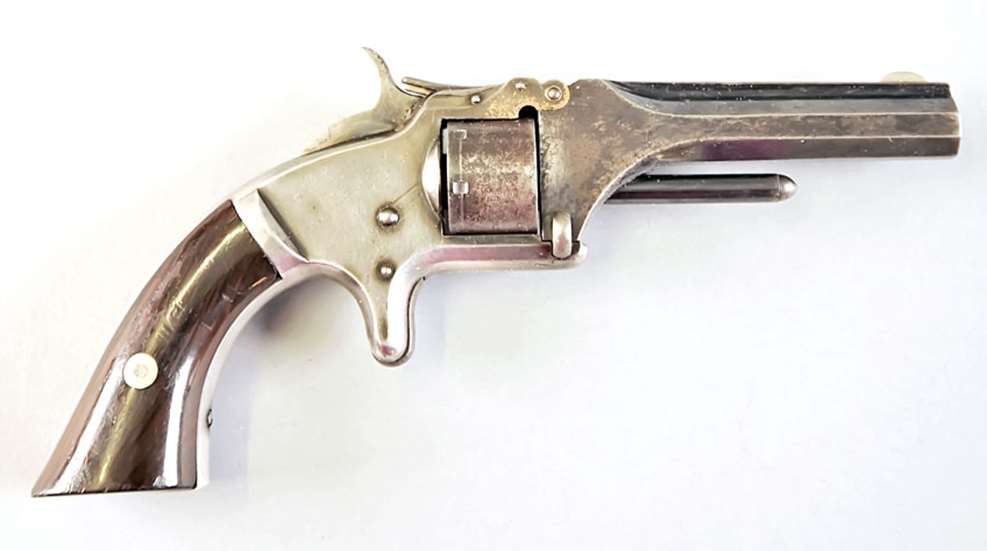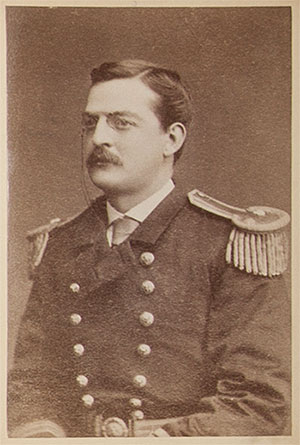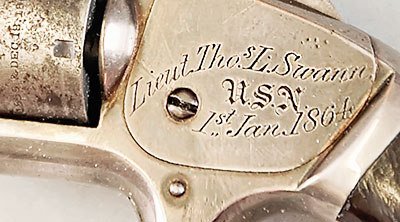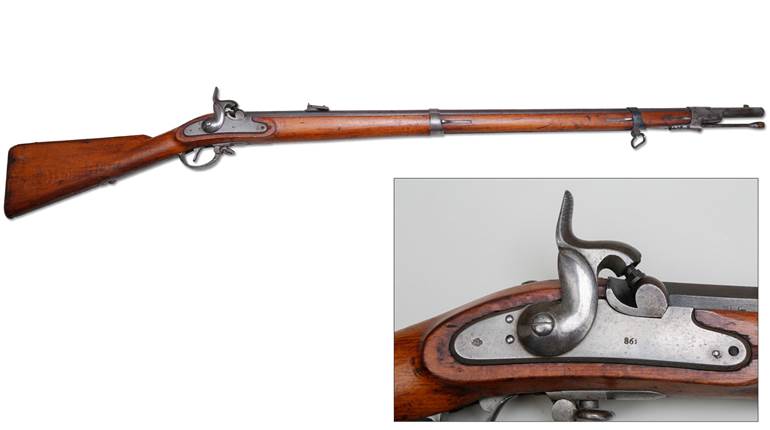
 Daniel Smith and Horace Wesson were not men who gave up easily. In 1854 the partners came out with a unique, lever-action, repeating, tubular-magazine-fed pistol. Well-made and mechanically innovative, it suffered a major problem in that the variant of the earlier “Rocket Ball” self-contained cartridge that it chambered was unreliable, delicate and underpowered. As interesting as the gun was, it was a flawed product. The men’s interest in the arm ceased around 1856 when the company was reorganized as the Volcanic Repeating Arms Co. and taken over by Oliver Winchester.
Daniel Smith and Horace Wesson were not men who gave up easily. In 1854 the partners came out with a unique, lever-action, repeating, tubular-magazine-fed pistol. Well-made and mechanically innovative, it suffered a major problem in that the variant of the earlier “Rocket Ball” self-contained cartridge that it chambered was unreliable, delicate and underpowered. As interesting as the gun was, it was a flawed product. The men’s interest in the arm ceased around 1856 when the company was reorganized as the Volcanic Repeating Arms Co. and taken over by Oliver Winchester.
Undaunted, the pair began work on a new project. As Samuel Colt’s revolver patent was due to expire, Smith & Wesson felt a new type of metallic cartridge revolver was the way to go. Under an agreement with former Colt employee Rollin White, who held a patent on a bored-through cylinder, in 1857 the pair introduced a diminutive seven-shooter chambered in a then-proprietary .22 Short Rimfire blackpowder cartridge.
Measuring just 7" overall with a barrel length of 3 3⁄16", it was cleverly put together—the cylinder being rotated by a pawl at the rear of the cylinder and locked by a spring-loaded lever (which also served as a rear sight) inset on the top of the frame.
 To load the piece, one pushed up on a latch at the base of the rear, lower portion of the barrel assembly that locked into a notch on the bottom, front of the frame. This allowed the barrel to be rotated upward—hence the gun’s nickname, “Tip-Up”—which permitted the cylinder to be removed and seven cartridges to be loaded into its chambers. The cylinder could then be replaced, making the revolver ready to fire in single-action operation by way of the spur trigger.
To load the piece, one pushed up on a latch at the base of the rear, lower portion of the barrel assembly that locked into a notch on the bottom, front of the frame. This allowed the barrel to be rotated upward—hence the gun’s nickname, “Tip-Up”—which permitted the cylinder to be removed and seven cartridges to be loaded into its chambers. The cylinder could then be replaced, making the revolver ready to fire in single-action operation by way of the spur trigger.
Though small in the hand and decidedly underpowered, the Model 1, as it was called, took the public by storm—its ease of loading and firing trumping the gun’s lack of firepower. Demand was such that initially Smith & Wesson had difficulty keeping up with orders. The first version of the Model 1, featuring a rounded frame, of which some 11,671 were built between 1857 and 1860, was re-designed in 1860 into a flat-framed “Second Issue” that was made until 1868, at which date the gun was again altered. This final “Third Issue” was produced until 1881.
The Second Issue Model 1 shown here is typical of its breed, having a blued barrel and silver-plated brass frame (full nickel or silver plating was also available). Stocks are plain rosewood panels. It is in excellent condition, retaining most of its finish, and, under normal circumstances, would be valued in the $750 to $900 range. But this example has the added appeal of being exquisitely engraved on the left side of the frame, “Lieut Thos. L. Swann/USN/1st Jan. 1864.”
Research disclosed that Marylander Lt. Thomas L. Swann was a graduate of the U.S. Naval Academy, class of 1856, who retired in 1874 with the rank of commander. During the Civil War, as well as being involved in numerous other clashes, Swann was the ordnance officer on the steam sloop U.S.S. Brooklyn at the pivotal battle of Mobile Bay on Aug. 5, 1864. After the engagement, he was officially commended by his captain as having, “everything ready and the working of his department was admirable; he was principally occupied during the action with the bow-chasers.” This added bit of naval provenance easily bumps the value of the piece up to $1,500.
Gun: Smith & Wesson Model 1
Chambering: .22 Short Rimfire
Manufactured: c. 1863
Condition: NRA Excellent (Antique Gun Standards)
Value: $1,500




































